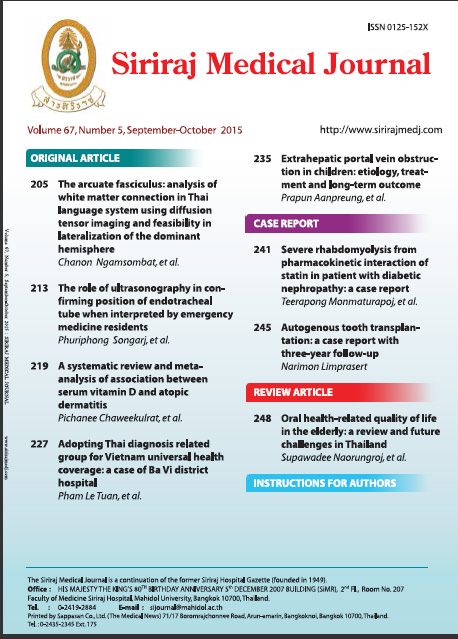The Role of Ultrasonography in Confirming Position of Endotracheal Tube when Interpreted by Emergency Medicine Residents
Abstract
Background: Delays in the detection of endotracheal tube (ETT) misplacement increase morbidity and mortality. Although numerous methods have been suggested to verify ETT position, each method has its limitations in terms of its reliability and applicability. Recently, ultrasonography (US) has emerged to assess the ETT position.
Objectives: This observation study was designed to assess the role of using ultrasonography for examining the ETT position among intubated patients who were admitted to the emergency department (ED).
Methods: The study was conducted in patients at the ED of a university-based hospital from September 2010 to November 2010. The ultrasound was performed after confirmation by a clinical assessment and a portable chest radiograph (CXR)conducted by a second- or third-year,emergency-medicine resident on-call at ED.
Results: Eighty patients were enrolled. The average time of US usage (time from turning the US machine on to finishing the confirmation of the ETT position and depth) was 149.9+91.7 seconds. The average time of CXR evaluation, which was the gold standard, was 30± 10 minutes. Improper position of ETT was detected by CXR in 11 cases and by US in one case. Conclusion: Ultrasonography could be used as the first line non-invasive ETT position instead of using CXR in ED.
Keywords: Ultrasound, airway, confirmation, emergency
Downloads
Published
How to Cite
Issue
Section
License
Authors who publish with this journal agree to the following conditions:
Copyright Transfer
In submitting a manuscript, the authors acknowledge that the work will become the copyrighted property of Siriraj Medical Journal upon publication.
License
Articles are licensed under a Creative Commons Attribution-NonCommercial-NoDerivatives 4.0 International License (CC BY-NC-ND 4.0). This license allows for the sharing of the work for non-commercial purposes with proper attribution to the authors and the journal. However, it does not permit modifications or the creation of derivative works.
Sharing and Access
Authors are encouraged to share their article on their personal or institutional websites and through other non-commercial platforms. Doing so can increase readership and citations.










